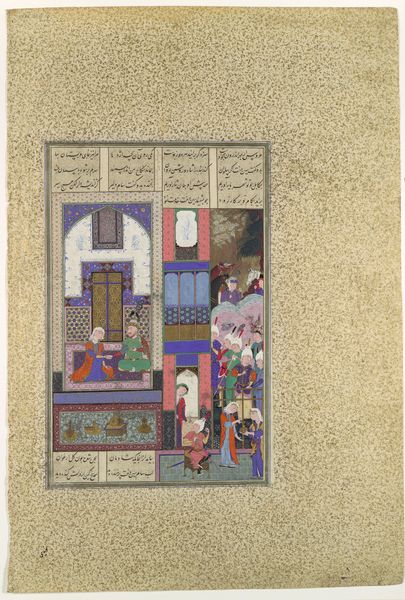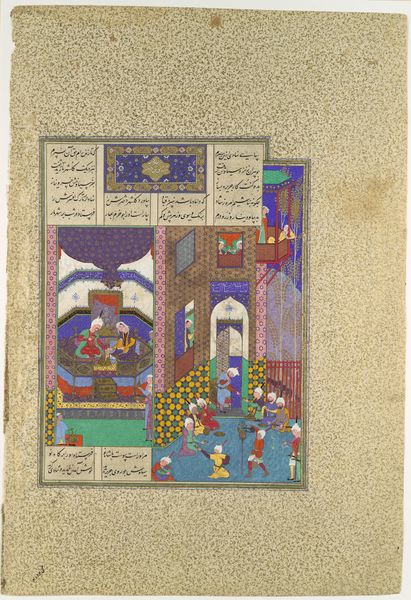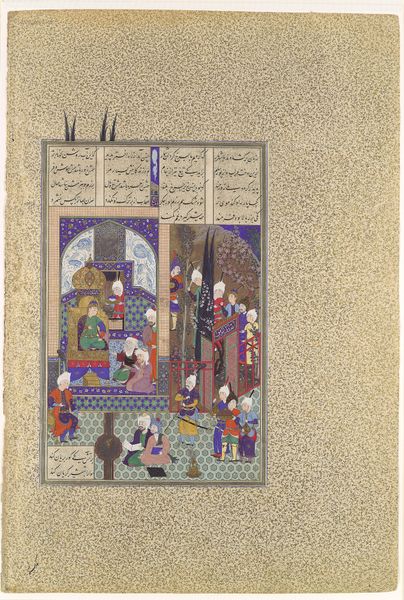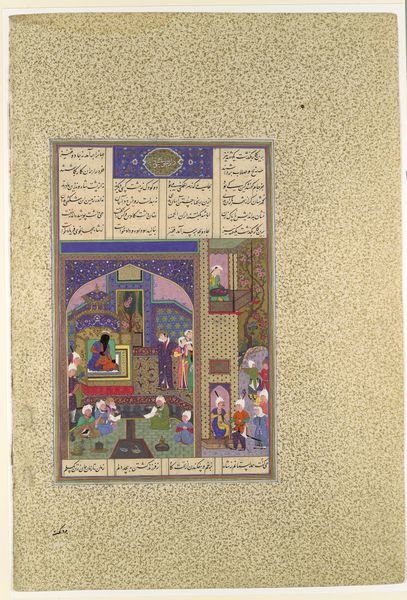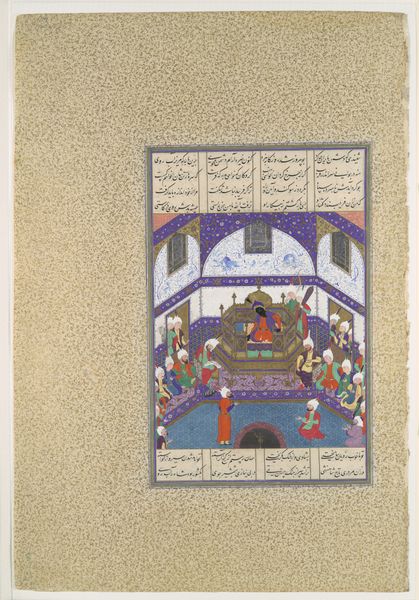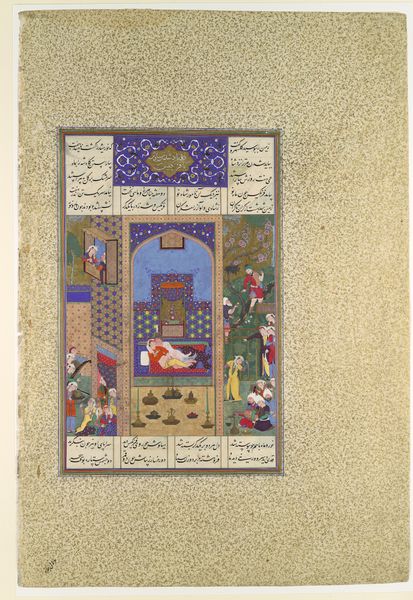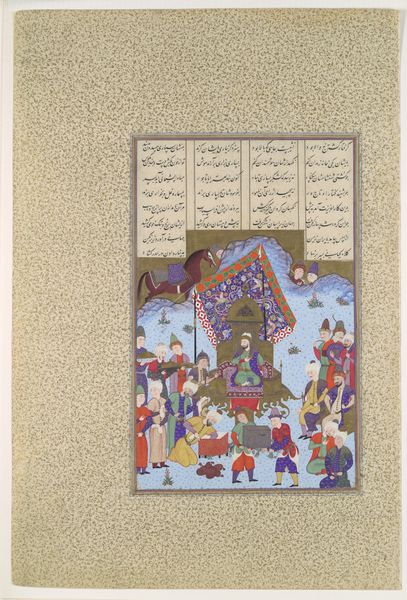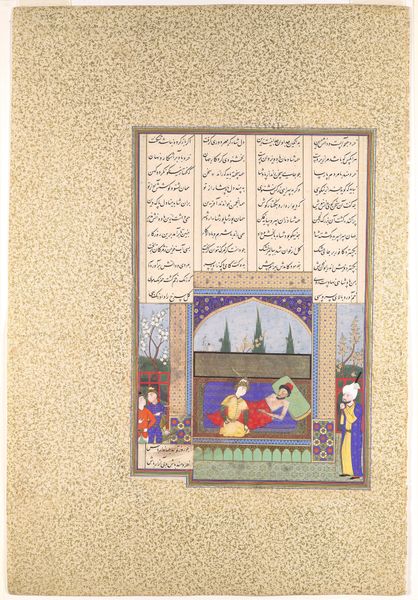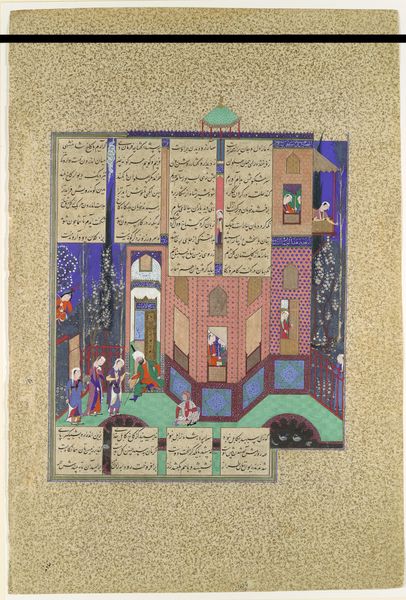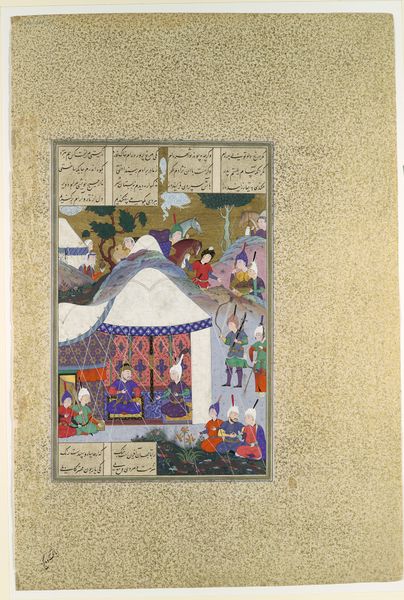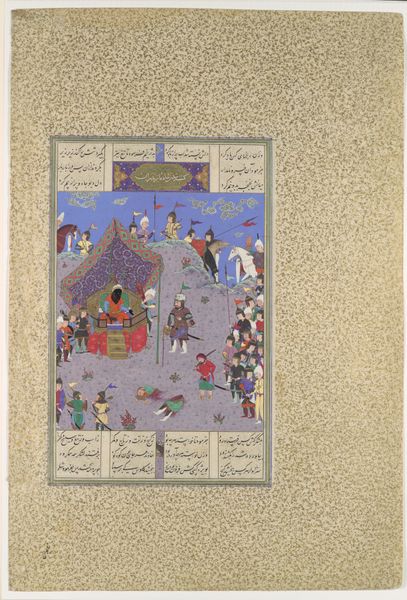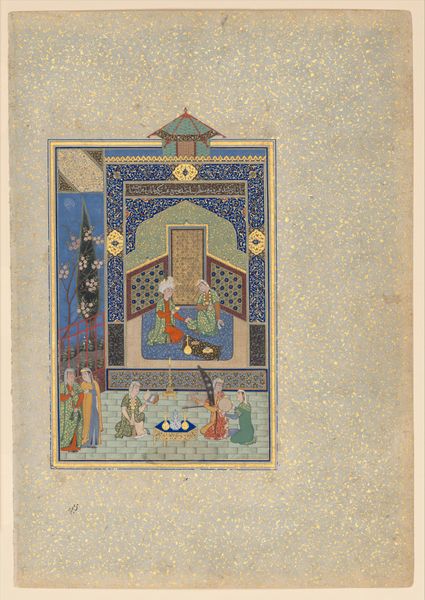
"Rudaba Makes a Ladder of Her Tresses", Folio 72v from the Shahnama (Book of Kings) of Shah Tahmasp 1500 - 1550
0:00
0:00
painting, ink
#
narrative-art
#
painting
#
landscape
#
figuration
#
ink
#
orientalism
#
islamic-art
#
miniature
Dimensions: Painting: H. 11 in. (27.9 cm) W. 7 1/4 in. (18.4 cm) Page: H. 18 1/2 in. (47 cm) W. 12 1/4 in. (31.1 cm) Mat: H. 22 in. (55.9 cm) W. 16 in. (40.6 cm)
Copyright: Public Domain
Editor: This is "Rudaba Makes a Ladder of Her Tresses," a folio from the Shahnama, dating between 1500 and 1550. It’s a painting, likely in ink, depicting a scene with figures and a tower against a richly patterned ground. It seems so… meticulously crafted, and theatrical! What strikes you about this piece? Curator: The visual opulence is immediately striking. Considering the historical context, the Shahnama was more than just an illuminated manuscript; it was an assertion of royal power and cultural identity in a politically fragmented Persia. Think of the sponsorship – Shah Tahmasp commissioning this grand, ambitious work to solidify his lineage and legitimacy. What kind of statement do you think the monumental scale of the whole manuscript would project in that era? Editor: It definitely speaks of wealth and power. But I'm also curious about the representation of gender here, particularly with Rudaba’s agency. It's called "Rudaba makes a ladder of her tresses", right? Is her making use of her own hair some kind of statement, or am I reading too much into it? Curator: Not at all! This scene highlights the unconventional power dynamics, within the rigid social structure of the time. Rudaba’s action—using her hair as a ladder—becomes symbolic. In terms of institutional context, such illustrations in royal manuscripts often functioned as both entertainment and didactic tools, subtly reinforcing or questioning prevailing societal norms through allegorical narratives. Is it celebrating this independent action, or warning against it? Editor: It's interesting to think about how even within such a decorative style, there could be a complex commentary. I hadn't considered the politics embedded in the narrative. Curator: Precisely. Looking at the sociopolitical landscape in 16th-century Persia shifts how we read this image, revealing its multifaceted layers of meaning and purpose. It makes the whole image richer. Editor: I'll definitely look at Islamic art with new eyes from now on, knowing it's much more than just decorative. Curator: And hopefully understand its vital role within culture and politics.
Comments
No comments
Be the first to comment and join the conversation on the ultimate creative platform.
